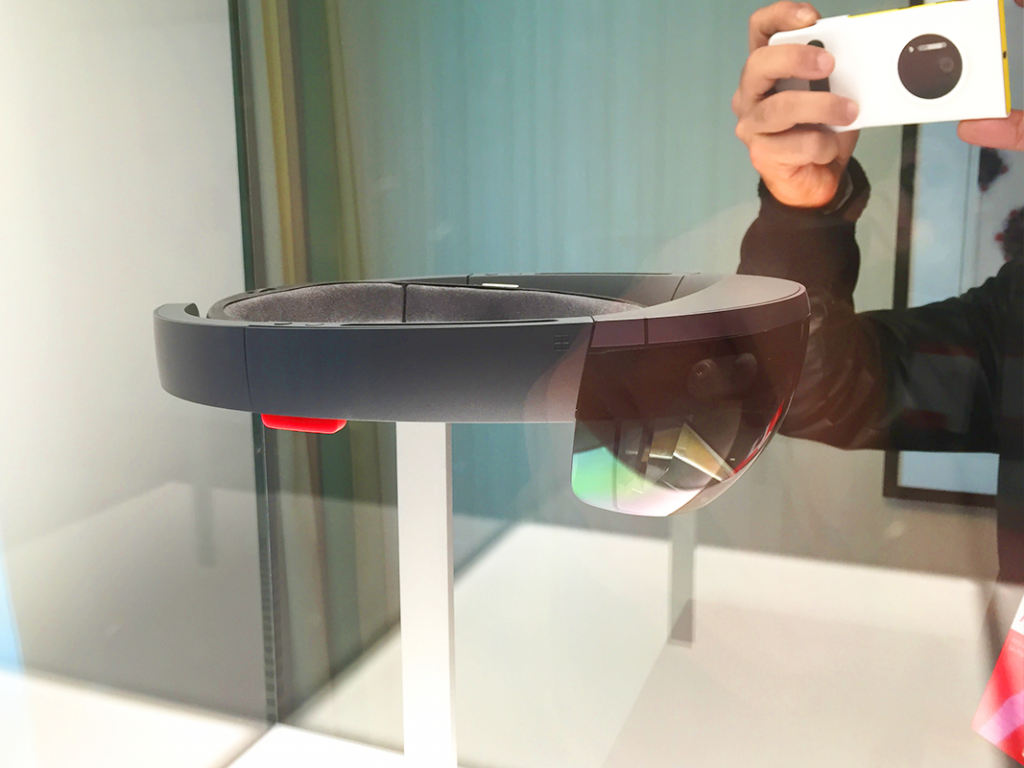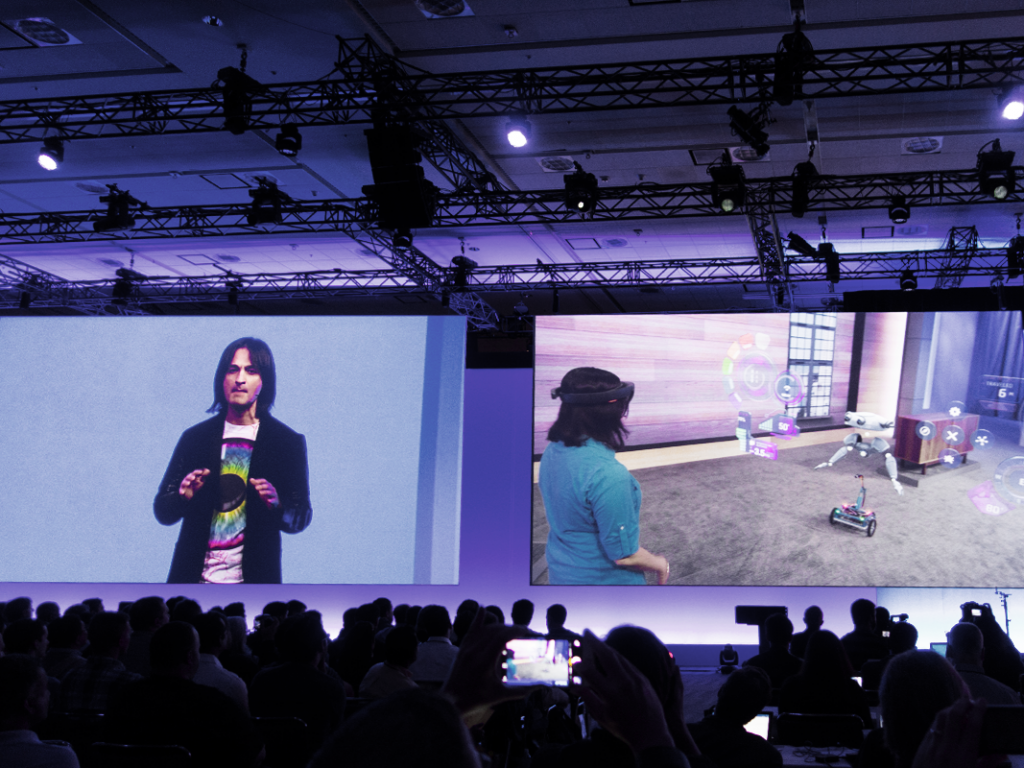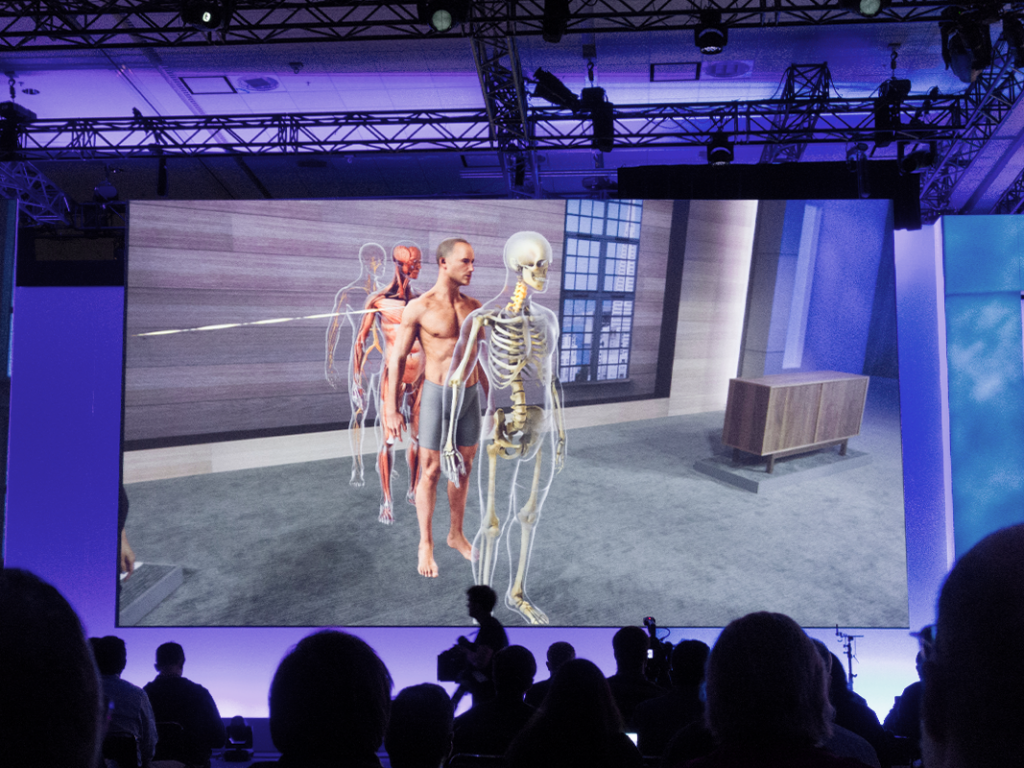Virtual reality experiments have been continuously carried out since user PCs learned to process graphics. Step by step, the tech has become capable of creating virtual worlds that look relatively real. However, one unexpected finding emerged: it’s darn hard to monetize a full-fledged virtual reality platform.
Creating new worlds is an expensive venture, whereas the demand is effectively limited to gaming and, to some extent, education. While it goes without saying that these markets are huge, the adults able to afford such virtual reality gizmos are rarely into gaming and aren’t as enthusiastic about studies.
That’s why the industry has started to look to augmented reality— a concept that revolves around graphic imagery complementing real-life picture. In this case, the outreach to an audience is much more substantial and this technology will eventually help yield more money for an AR vendor. One can even come up with a handful of uses for the enterprise segment, which is important because the latter is more willing to spend big bucks.
However, there is one insurmountable obstacle getting in the way of an otherwise good business idea— the wearable’s dimensions. In the case of virtual reality, a user is relatively unmoving, stationed in the same place the whole time. The augmented reality presupposes that virtual objects are integrated into real life.
This means a user should live a normal life, going about their day-to-day business while a wearable smart head display overlays interesting and useful information onto their surrounding world.
Here is where the challenges emerge— with the tech available today, it’s impossible to create a battery capable of powering such high-end hardware. On the other hand, if the headgear is built using less powerful components, the resulting reality isn’t ‘augmented enough’.
With all that said, companies, nevertheless, are fully engaged in AR research with one eye on the future— one day, suitable batteries will be designed and hardware will offer better performance per cubic inch, signalling the start of the AR monetization era.
I gather our readers have already heard about some controversial Google Glass experiences. Now, it is time to discuss the ‘asymmetrical response’ to the smart glass concept, the Microsoft HoloLens augmented reality (AR) system.
It first appeared on January 21, 2015 at the Windows 10 launch. The entire demo was limited to showcasing the gadget on stage while a couple of promotional videos played on the screen. Pretty darn vibrant and exciting videos, I’ll admit.
At Microsoft Build 2015, Microsoft’s yearly developer conference, HoloLens received a considerable amount of attention during the Day 1 presentation, and several hundred attendees were allowed to test drive the system. I was among those lucky few chosen.
HoloLens looks stunning on stage. Or rather, HoloLens is stunning through a user’s perspective. From an audience member’s immediate viewpoint, they see a group of people wearing helmets and moving their heads from side to side. However, if they look beyond the people to the screens where the helmet videos are being streamed, some real magic is happening.
A person wearing the helmet can ‘walk’ in virtual rooms, with virtual walls bearing screens that play movies; there are 3D objects on the bedside tables (practically indistinguishable from real ones!), and boring physical objects are equipped with fascinating virtual add-ons in real time.
Onstage, a woman demonstrated how we could examine the human body by virtually ‘pulling out’ blood vessels, muscles, and neural systems. I’ve seen how students learn anatomy in medical school labs, and the HoloLens way seems much more pleasant to me.
Microsoft is not divulging much about the helmet’s ‘insides’. Currently, we know that a purpose-made HPU (Holographical Processing Unit) is used for effects computation and the full-feature Windows 10 manages the program as a whole. Below are some assumptions based on what I experienced:
First, HoloLens can wholeheartedly be called HolyLens: it’s quite obvious Microsoft’s Israeli division, whom we should thank for developing Kinect (I know the corporation acquired an Israeli developer startup once, but it does not change a lot), was involved. Many Kinect ideas fuel several HoloLens features and capabilities, and the first rumors about AR development going on at Microsoft were heard from the Holy Land.
Secondly, it is quite plausible that Intel Core M powers HoloLens, as the latter is, in essence, a full-fledged computer. Intel’s chip is the only processor capable of yielding considerable performance without active cooling on board, as HoloLens does not employ fans. Of course, there would be other hardware to power up the allegedly upcoming commercial HoloLens version (provided it will happen at all), but as of today, there is no other option.
#Microsoft #HoloLens: How I touched the future.
Tweet
All in all, the system looks pretty cool. What about the hands-on experience?
Usually, ‘secret’ demos are held in ‘secret’ rooms. Well, the folks at Microsoft would not put up with small boardrooms, so the HoloLens demo was organized on a couple of floors at the hotel, not far from the Moscone center. Admission was by invitation only, with compulsory assistance and convoy by a Microsoft employee in the same package.
Before allowing us to touch the magic, we were shown th appropriate way of putting a helmet on (holding with two hands, simultaneously!), then our interpupillary distance was measured, and then we were shown a short presentation depicting two young men working on the 3D model of a building via Skype.
And one more thing: Just before the demo, we were told to leave all electronic devices, including smart watches, so the only proof about the HoloLens hands-on experience that I have is the photos of a helmet prototype in the glass case and a tee with a print of a helmet.
As soon as we were done with the foreplay preparation, the Microsoft people took us to the 27th floor of the hotel, where separate HoloLens demo-zones were organized in all rooms. Before it begins, the system requires a lengthy and highly precise calibration process to accommodate the peculiarities of each room, otherwise nothing would work. So, not all rooms are fit for the demo, at least for now.
I put on the craved helmet, cautiously, with two hands as instructed. The helmet felt heavy. The plastic outfit was somewhat warm, indicating that the hardware was operating inside. The helmet is fixed in the correct position by a purpose-made flathead pointed at the precise spot where the cerebellum is located. Not an exciting option, after all: I am rarely affected by headaches, but in this case I immediately felt it.
I handled a 10-minute demo with ease, but I assume even half an hour with a helmet on would be torture. The construction is quite heavy, approximately a couple of pounds. Hard fixation of the helmet is a must: once your eyes move away from the center of the display, the magic is gone. The helmet is compatible with the majority of glasses, unless you are a fan of huge hipster-coveted rimmed models.
It might seem that AR is seamlessly integrated into the real world. In reality, this is not the case yet. Once in a helmet, you see the surroundings as if through the lens of the camera, with a focal distance of approximately 50 mm.
Photography aficionados would get the point, so let me explain it for ordinary folk: the 50-mm lens is great for still-life and portrait photos, but not ideal for panoramic views. The viewing angles are quite limited. AR is making its appearance as through a window, so in order to see the entire picture, one should turn his head frequently.
As a part of the demo, I was offered to look at a cardboard mockup of the building ensemble located around an empty square. There was a need to construct an additional building on the square, and I was able to see the models of the would-be building. The virtual building indeed was no worse than the carton ones.
I was offered to change its dimensions, but not with help of gestures (this particular kind of magic is currently available only to real AR professionals on the stage) but with a good old PC mouse. The building, as I ordered to the system, grew several stories. In order to see the upper stories, I had to really look up.
Then they fancied me with a virtual stroll in the newly modeled building. That’s how I was able to see the flaw in the design: the support steelwork ended up in the middle of a window! Richard the Engineer, which popped up from somewhere in the room, put me up to speed.
Richard looked like a whitish replica of a human without textures (I assume textures are quite demanding in terms of processing power, and for now they aren’t a high priority on the list). He moved the window to the right, and the problem was solved. In real life, though, an architect who allowed this to happen, would be fired on sight.
I watched all of these manipulations; I saw the windows, and the steelwork, and the things happening on the ‘outside’. The resolution of the picture outside the window was not that high, but nevertheless the entire thing was impressive.
Then a flawed pipe was found inside the wall in front of me, also quite realistic. Richard managed to fix it in a snap. I think this guy, although bearing an English name, could be some Russian dude from Kemerovo, where people can fix ANYTHING.
That was when the demo ended. As far as I understood, all reporters are equal, but some are more equal than others, so my American peers were shown a bit more. But the initial impression was enough for understanding the current state of the HoloLens evolution.
Are we bound to see the commercial shipments in the foreseeable future? No, I don’t think so. The first reason for that is hardware. In order to be a convenient wearable gadget for day-long use, HoloLens should be much lighter and more compact and have a day-long battery life as well.
It is obvious that both requirements are unfulfillable with the current available hardware and, most notable, batteries. And don’t forget about viewing angles which should be a lot wider.
The second reason is software. The basic HoloLens software operates alright. But in order to justify the purchase of such a product in the eyes of a consumer, a lot of additional content should be created. It might be varied, from luxury interior mockups to virtual interlocutors of the opposite sex, from digital human imitations to 3D gesture-enabled modeling. Developing such apps from scratch will require a lot of funding, effort, and time, as no one has ever properly done it before.
Looks like Microsoft would have to fine-tune its helmet at first and make it lighter and more convenient, then follow up by setting up commercial production (currently all helmets are handmade), make the calibrating process seamless and user friendly, then give away a lot of sample helmets to developers so the latter could create apps, then help them make interesting products, and only then think about conquering this promising market. It would, most likely, take years, if not a solid decade, to complete. Various pitfalls, now unthought of, are bound to emerge in the process.
The augmented reality might also pose a lot of dangers. Some vicious hacker could compromise a child game, making some terrifying long-toothed rats jump at your child instead of innocent kittens. You might get accustomed to wearing a helmet at all times, and will dial in a PIN code on an ATM, making it available for a Trojan that might have already snuck into your system. The malware then would be able to remember the card number, the PIN and the CVV code – all security factors necessary to compromise your bank account.
The opportunity to collect information through a helmet like this one is immense: it is not a simple webcam which looks in one direction. The cameras in a helmet see everything you see while you are wearing it.
How direct neural interfaces work and how it refers to data security http://t.co/UZ9H7CmZQX
— Eugene Kaspersky (@e_kaspersky) May 1, 2015
Not to mention the issue of ‘interoperability’ between augmented and physical realities. Imagine you are fully immersed into an interesting movie shown on your head display and run into an obstacle in your flat (a chair or a wall). Now think about the odds of a similar occurrence during, say, a subway ride.
Well, with a lot of potential dangers, a lot of potential benefits are also visible. No use in listing all possible use scenarios in all the industries. Your imagination is the limit.
Microsoft is, by all means, not the only company exploring the possibilities of augmented reality. The scent of money is hanging in the air, and dozens of startups, whose numbers increase year by year, follow the industry giants’ lead. While the perspective of a commercial product availability to the majority of users is still very unclear, I am sure we will one day wake up in the morning and put on AR eyewear with the same ease in which we now reach out for a smartphone first thing in the morning.
Or only our children will, yet I still feel good about it.
 3d
3d




 Tips
Tips